In 2025, a new ‘Plug and Charge’ protocol will change the EV charging world. It will make charging easier for EV owners. This move aims to fix the current problem of many charging networks.
With this new standard, EV drivers can just plug in and start charging. No more dealing with different apps or payment methods. This makes using electric cars more straightforward and appealing to more people.
Universal ‘Plug and Charge’ EV Protocol Coming in 2025 Key Takeaways
- A universal ‘Plug and Charge’ protocol will be introduced in 2025 to simplify the EV charging process.
- The protocol will address the fragmentation in charging networks and enhance the seamless charging experience for EV drivers.
- Automatic authentication and payment will eliminate the need for multiple apps or payment methods, making electric mobility more accessible.
- The new protocol aligns with the growing demand for a user-friendly EV charging infrastructure.
- The adoption of this universal protocol will contribute to the widespread acceptance and usage of electric vehicles.
Table of Contents
- 1 Understanding the Current EV Charging Landscape
- 2 A universal ‘Plug and Charge’ protocol for EV charging is coming in 2025
- 3 The ISO 15118 Standard: Technical Framework and Implementation
- 4 Benefits for EV Drivers and Charging Operators
- 5 Smart Grid Integration and Energy Management Features
- 6 Global Market Impact and Industry Adoption
- 7 Infrastructure Requirements and Implementation Timeline
- 8 Interoperability with Existing Charging Networks
Understanding the Current EV Charging Landscape
The electric vehicle (ev) market is growing fast. But, the charging infrastructure is still a mess. There are many charging networks, payment methods, and systems to figure out. This leaves EV drivers feeling stuck and confused.
The Fragmentation of Charging Networks
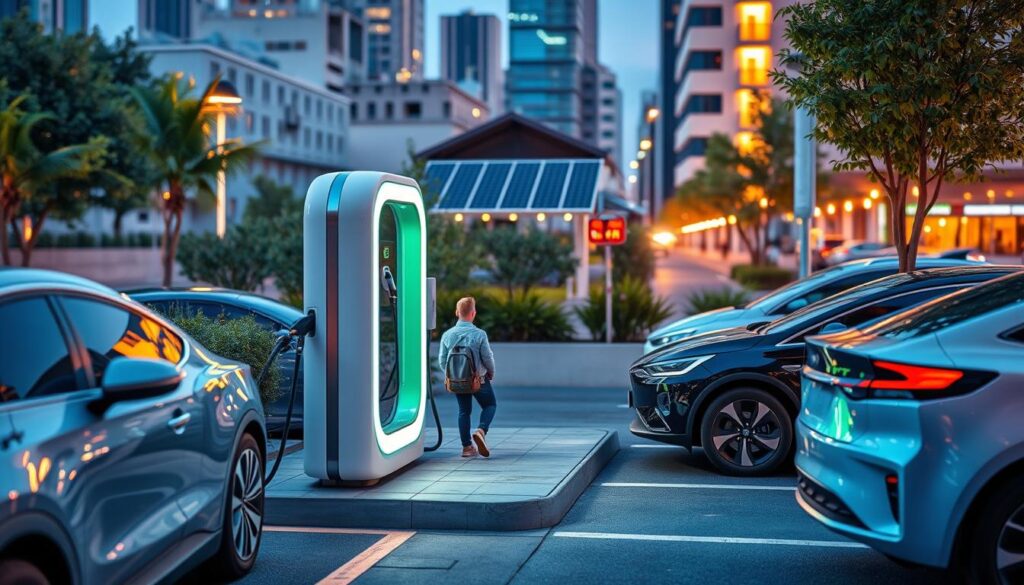
EV users face a big problem: no single charging network. Car makers use different ev charging standards like CCS, CHAdeMO, and Tesla’s NACS. This makes charging stations not work together. Drivers might need to use many apps or cards to charge their cars.
Existing Payment and Authentication Methods
Adding to the problem, there are many ways to pay and authenticate. EV drivers must deal with apps, RFID cards, and even keys. This interoperability in ev charging is slow and annoying, especially when traveling.
Consumer Pain Points in EV Charging
The mix of broken charging networks and hard payment systems is a big issue. Drivers may find it hard to find charging spots, deal with compatibility issues, or complete payments. These problems can make driving an EV less enjoyable and might stop people from buying them.
There’s a clear need for a better, easier charging experience. A universal “Plug and Charge” protocol is being developed. It aims to fix these problems and make EV charging better for everyone.
A universal ‘Plug and Charge’ protocol for EV charging is coming in 2025
The future of electric vehicle (EV) charging is about to get a big boost. In 2025, a universal ‘Plug and Charge’ protocol will start. This will change how EV drivers charge their cars at stations.
This new system will make talking between cars and charging spots easy. No more using many apps or paying in different ways.
The protocol was made by the SAE Industry Technologies Consortia (ITC) and the Electric Vehicle Public Key Infrastructure (EVPKI) Consortium. It aims to make charging fast and easy. EVs and charging spots will talk to each other automatically, making things smoother for drivers.
The EVPKI Consortium’s Certificate Trust List (CTL) is key. It makes sure charging starts safely and quickly. This will help the EV sector grow, making it easier for everyone to use new technology.
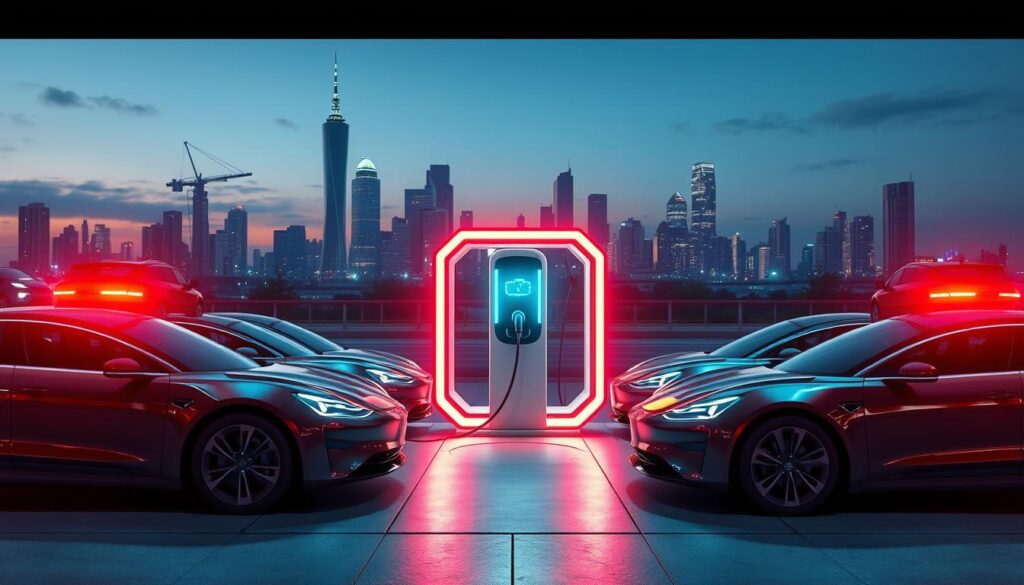
EV drivers will soon enjoy easier charging. No more dealing with many apps or payments. The new system will handle everything automatically, making charging simple and contactless.
This big change will help more people use electric cars. It will also make charging easier to find. EV drivers can look forward to a future where charging is as easy as plugging in and driving off.
The ISO 15118 Standard: Technical Framework and Implementation
The ‘Plug and Charge’ protocol for electric vehicles (EVs) is based on the ISO 15118 standard. This standard covers key areas like secure communication, over-the-air updates, and working together across the EV charging world.
Security Features and Encryption Protocols
The ISO 15118 standard puts a big focus on keeping data safe and encrypted. It uses top-notch encryption, like X.509 certificates and TLS, to protect messages between EVs and charging stations. This keeps important info, like who you are and how you pay, safe from hackers.
Communication Between Vehicles and Charging Stations
The ISO 15118 standard makes sure EVs and charging stations talk smoothly. It sets up how data is shared and how charging starts automatically. This makes sure you can charge your car easily, no matter where you are.
Payment Processing Architecture
The ISO 15118 standard also has a clear plan for handling payments. It uses digital certificates and keys to make transactions safe and easy. This means you can just plug in and the charge will be taken care of automatically.
| Feature | Description |
|---|---|
| Secure Communication Protocol | The ISO 15118 standard uses advanced encryption, like X.509 certificates and TLS, to keep data safe between EVs and charging stations. |
| Over-the-Air Updates | The standard allows for updates to EVs and charging stations, keeping the ‘Plug and Charge’ system current and secure. |
| Interoperability | ISO 15118 makes sure different EVs and charging networks work together, giving a smooth experience everywhere. |
Using the ISO 15118 standard is key to making the ‘Plug and Charge’ protocol work well. It promises a safe, easy, and efficient way to charge your EV for everyone involved.
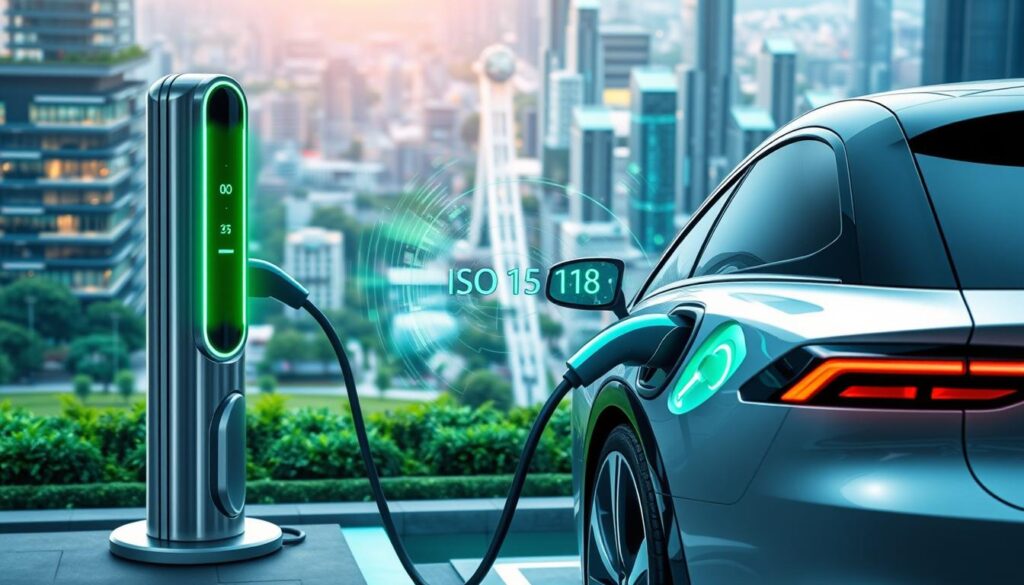
Benefits for EV Drivers and Charging Operators
The ‘Plug and Charge’ protocol for electric vehicles (EVs) is changing the EV charging infrastructure. It promises a smooth charging experience for drivers. This standard brings many benefits for both EV owners and charging operators, helping more people use electric vehicles.
For EV drivers, the ‘Plug and Charge’ protocol makes charging easier. No more dealing with many apps, cards, or accounts. Drivers can charge at any compatible station easily, without hassle. This makes it simpler for new EV owners to start.
Charging operators gain from this too. They see better efficiency, lower maintenance costs, and happier customers. The universal protocol makes operations smoother, leading to better use of resources. This results in a more reliable charging system for EV drivers.
The ‘Plug and Charge’ protocol’s wide use will grow the EV charging infrastructure. It will become more accessible and easy to use for everyone. This step is key to making electric vehicles more common. It’s a big step towards a greener, more sustainable future.
Smart Grid Integration and Energy Management Features
The universal ‘Plug and Charge’ protocol for EV charging is set to launch in 2025. It will make smart grid integration and energy management easier. Developed by the SAE EVPKI Consortium, it aims to make charging secure and automated. This will help both EV drivers and charging network operators.
Load Balancing Capabilities
The new protocol has a big advantage: load balancing. It lets vehicles, charging stations, and the grid talk to each other. This way, power is distributed better and the grid doesn’t get too full during busy times.
This means EV drivers will get a better and more reliable charge. It also helps keep the electrical grid working well for a long time.
Renewable Energy Integration
The ‘Plug and Charge’ protocol also helps use renewable energy like solar and wind. It makes charging more green by managing clean energy for charging stations. This makes EV charging better for the planet.
| Feature | Description |
|---|---|
| Load Balancing | The protocol enables communication between vehicles, charging stations, and the grid to optimize power distribution and prevent grid overload during peak charging times. |
| Renewable Energy Integration | The system supports the integration of renewable energy sources, such as solar and wind, allowing for more sustainable charging practices. |
Global Market Impact and Industry Adoption
The ‘Plug and Charge’ protocol is set to change the EV market worldwide. It will lead to more innovation, lower costs, and better electric vehicle infrastructure. Big car makers and charging networks will likely use this tech, making EVs easier to use everywhere.
The data center market is expected to grow fast, thanks to new tech and more data. The partnership between Siemens and Compass Datacenters shows how ‘Plug and Charge’ could change EV charging.
Siemens and Compass Datacenters have a big deal for custom power solutions. They will make up to 1,500 units in five years. This will help data centers start up quicker, meeting the growing demand.
| Key Adoption Factors | Impact on the EV Charging Ecosystem |
|---|---|
| Streamlined charging experience Reduced installation costs Improved interoperability Enhanced grid integration | Increased EV adoption and usage Expanded charging network coverage Greater efficiency in energy management Seamless integration with renewable energy sources |
With the ‘Plug and Charge’ protocol, the future of EV charging looks bright. It could make electric cars more popular and help our planet.
Infrastructure Requirements and Implementation Timeline
The electric vehicle (ev) charging world is getting ready for a big change. Charging stations will need new hardware to support the ‘Plug and Charge’ protocol. This will make it easy and safe for cars and charging points to talk to each other.
The move to the ISO 15118 standard will bring new software challenges. Old systems will need updates for smooth communication and interoperability in ev charging. Everyone involved will have to work together to make the electric vehicle infrastructure better and easier to use.
Hardware Upgrades for Charging Stations
Charging stations will get new parts to support the ‘Plug and Charge’ protocol. This includes better communication, security, and payment systems. The updates are expected to happen fast, with a goal of being ready by 2025.
Software Integration Challenges
Adding the new ‘Plug and Charge’ software to old systems will take careful planning. Charging operators, fleet managers, and others must make sure their software works with the ISO 15118 standard. This will allow for easy data sharing and transactions.
Cost Considerations for Stakeholders
The ‘Plug and Charge’ protocol will cost a lot for those involved in the ev charging infrastructure. Owners of charging stations, car makers, and service providers will have to spend on new hardware, software, and training. But, the benefits like better interoperability and a smoother experience for drivers will be worth it in the long run.
The move to ‘Plug and Charge’ is a team effort. Everyone in the electric vehicle world is working together to get it done. This change will make charging easier for drivers and help create a more connected, green future for transportation.
Interoperability with Existing Charging Networks
The ‘Plug and Charge’ protocol for electric vehicles (EVs) is set to launch in 2025. It’s key to work well with current charging networks. This ensures a smooth transition and keeps EV users happy everywhere.
It’s important to make the ‘Plug and Charge’ protocol work with today’s charging systems. EV drivers should easily find and use charging stations, no matter the network. This makes using EVs easier and helps everyone involved.
Getting this right will take teamwork from car makers, charging station creators, and network managers. They need to make sure all systems talk to each other well. This way, EV drivers can enjoy a seamless ‘Plug and Charge’ experience anywhere.
Also Read:- Aprilia Tuono 457 India Launch Mostly in January 2025



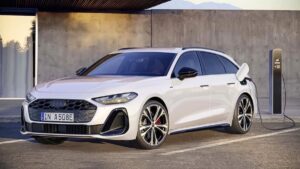


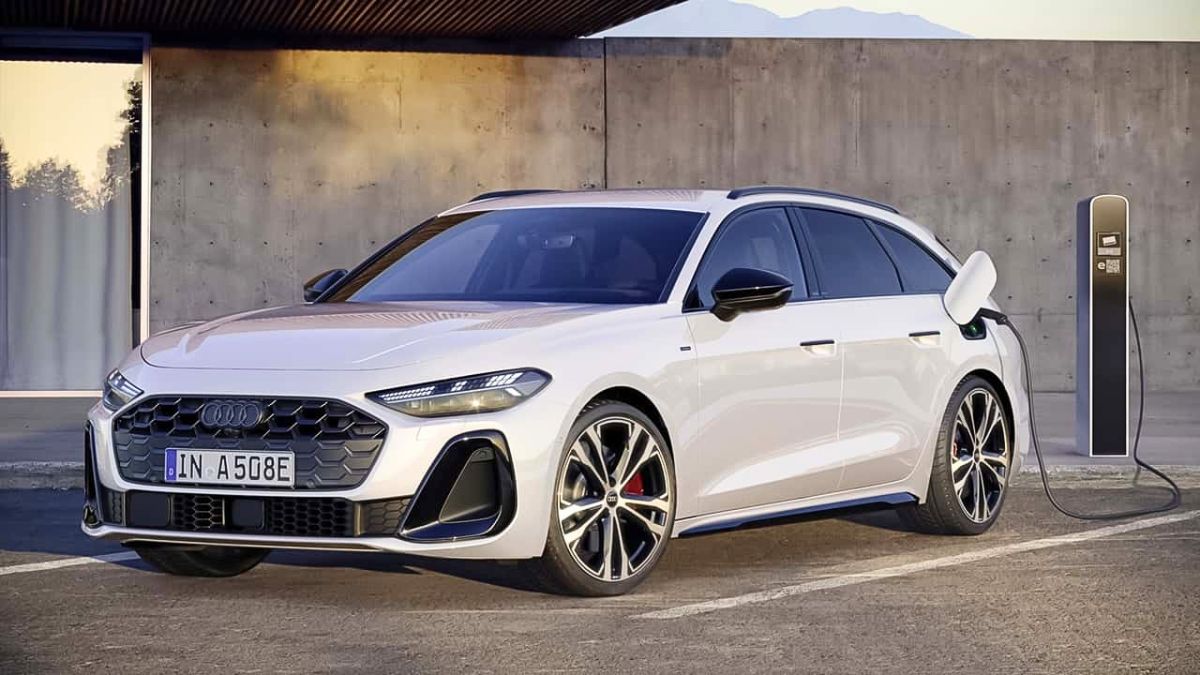

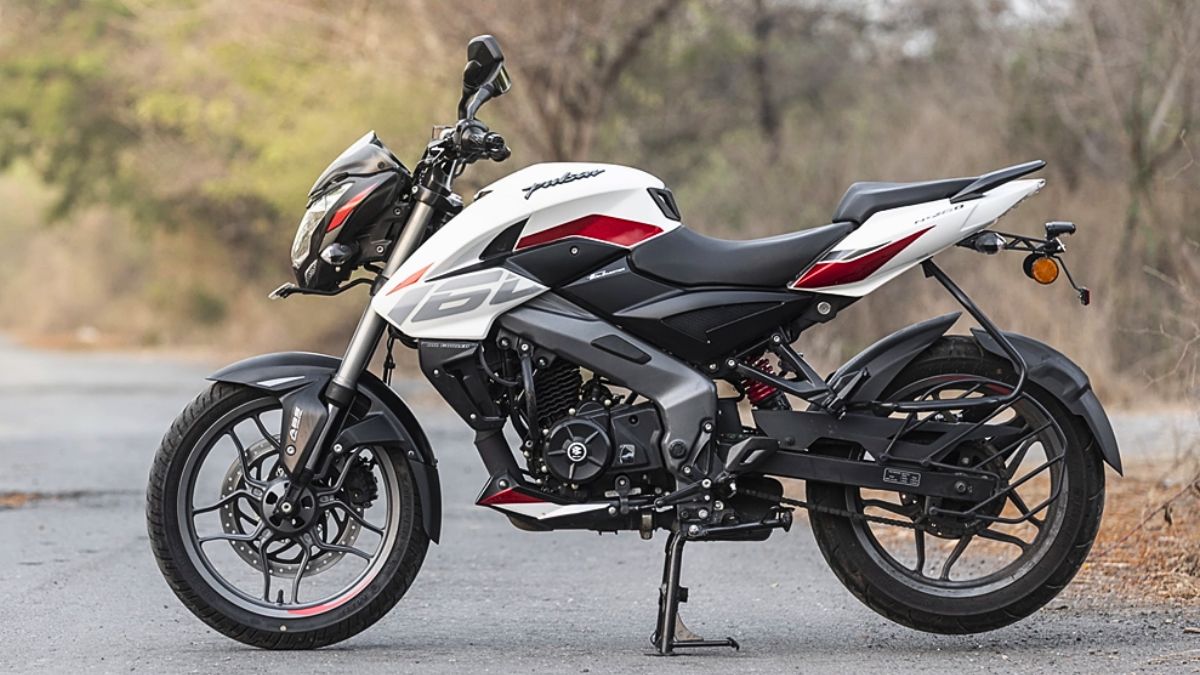


1 thought on “Universal ‘Plug and Charge’ EV Protocol Coming in 2025”